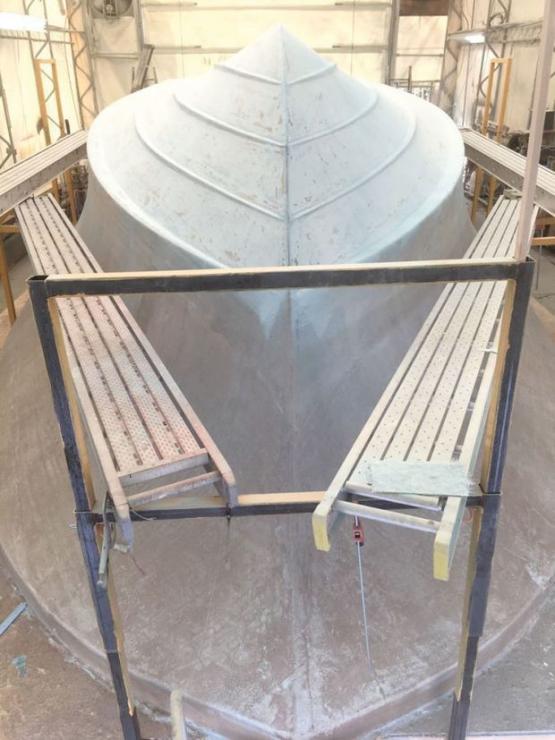In last month’s custom boat building article we emphasized the importance of clearly defining the boat you want and identifying the builder who can produce it for you. This month we will explore three other important areas that a custom boat buyer needs to consider.

First is resale value. We all think our current boat is perfect, but what happens in two or three or five years when a new boat is in the cards? When developing your specifications for your ultimate boat, remember that the more idiosyncratic and “different” the boat is, the harder it will be to sell. For example, I once toured a large motor yacht owned by a successful oral surgeon who had all the door handles, drawer pulls, and cabinet hardware cast in the shape of toothbrushes! So as you customize your boat, give some thought to how your design will appeal to the next owner.
Custom boats come in all sizes and shapes. The bigger and more complex the project is, the more important money becomes. I discussed the issues involved in financing a custom boat with Jane Tayman of Trident Funding. Jane observed that it is very difficult to get a marine lender to do custom build or construction loans. She recommends that the buyer self-fund by getting a personal loan or a line of credit which will allow them to make the periodic progress payments required by the contract. Once the boat is completed and delivered and its value established, Trident will then make a loan secured by the boat, and the buyer can reimburse the original loan costs.
Obviously, to make this scenario work, one will need a good credit score and a hefty down payment. In many ways the build contract is the heart of the custom building process. If you are having a small crab skiff built by a builder you know, a handshake deal is fine. Anything more complicated should have a written contract. Many builders have a standard offer-to-build contract that they will want you to sign. Again, the size and complexity of the boat dictates the level of detail in the contract.
There is too much variation in contracts to lay out the perfect one, but a few major points need to be made. The contract should specify the size, construction material, and type of hull being built. If it is a totally new design, the plans of the naval architect should be referenced. If the boat is a standard type for the builder, that needs to be referenced. The delivery date should be specified as well as any performance requirements. Custom boats are often built to existing industry standards. Smaller boats are usually built to American Boat and Yacht Council Standards. Larger boats with offshore capability are usually built to internationally recognized standards such as Lloyd’s A1. Building to a recognized standard guarantees a safer boat and makes securing insurance much easier.
The contract should also specify all the equipment, furnishings, light fixtures, plumbing, and engines to be installed on the boat. The contract should also spell out who owns the boat while it is being constructed. This is an important point. If the buyer owns the boat, he is also responsible for insurance and liability coverage while the boat is in the shop. On large projects there is often a lot of money the builder must have to buy materials and equipment. To spread these costs out over the life of the project, a system of progress payments is usually employed. Progress payments are usually specified at major benchmarks in the construction of the boat. Usually a substantial deposit is required to begin construction and payments at other steps, such as completion of the hull or installation of the engines, are specified in the contract.
Once all these things and many more are agreed to, there needs to be an agreed-upon method for making changes. Most often this is known as a change order. Change orders can be for small and simple things, such as changing the color of a carpet, or major changes like specifying a different engine. Regardless of the size of the change, change orders are addendums to the original contract and become a part of that contract; they must be signed off on by both sides, including agreement on the cost of the changes.
Ultimately the process for conducting sea trials, the performance of the boat, and the delivery to the owner is the last item to be addressed in the contract. Contracting for a custom yacht is not something to be undertaken lightly. A prospective buyer should employ a reputable attorney who is familiar not only with contract law in your state, but who also has experience in the marine field. The cost is not cheap, but it will save you money in the long run. If you manage to jump through all these hoops, and your boat is delivered as promised, congratulations! Enjoy your boat.
by Captain Rick Franke